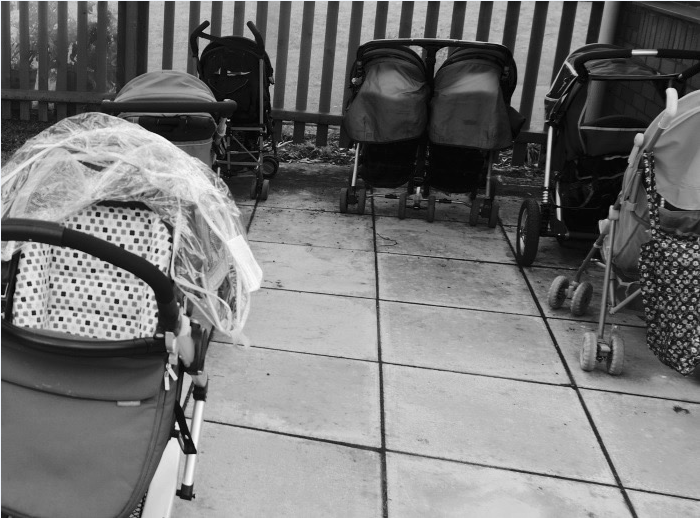A new study of more than 18 million births across 72 countries finds that, contrary to previous thinking, twin births are more likely in healthier mothers with healthier behaviours.
The study is by Professor Sonia Bhalotra at the Institute for Social and Economic Research with Professor Damian Clark at the Universidad de Santiago de Chile.
Professor Bhalotra said:
“Twins have intrigued humankind for more than a century. Researchers in the bio-medical sciences, psychology and economics have used data on twins to assess the importance of nature vs nurture. Economists have further used the incidence of twin births to denote an unexpected increase in family size, as this assists causal identification of the influence of fertility (the number of children) on parental investments in children and on women’s employment. We present new population-level evidence that challenges the premise of this research, which is that twin births are quasi-random. Our research shows that the distribution of twins in the population is skewed in favour of healthier women with healthier behaviours, who are also more likely to spend more time on parenting. We document that this association is meaningfully large, that it is evident in rich and poor countries, and for a range of indicators of health.
Many countries have implemented policies to incentivize or penalize fertility, and an understanding of how fertility influences parenting quality or women’s careers is important to reviewing such policies. Previous studies that rest on the premise that twin births are independent of characteristics of the mother that influence the environment in which children are reared, or her preferences for working will have tended to under-estimate the relevance of fertility choices.
The intuition for our result is that carrying twins to term is more demanding than carrying a singleton to term, so any stressors of maternal health lead to selective miscarriage of twins. We establish this mechanism using rare administrative data on miscarriage. Our findings may at first seem more plausible for poor countries, where many women are severely under-nourished, antenatal services are weak and, as a result, foetal health is worse. It makes sense that challenges to maternal health then translate into women not being able to carry twin conceptions to birth. However, in richer countries, where chronic under-nutrition is less prevalent, many women engage in risky behaviours and/or experience medical problems in pregnancy.
We show that the association holds for all available markers of maternal condition including health stocks and health conditions prior to pregnancy (height, body mass index, diabetes, hypertension, kidney disease smoking), health-related behaviours in pregnancy (healthy diet, smoking, alcohol, drug-taking) and availability of prenatal care. We also demonstrate a positive association of twin births with the mother’s education, consistent with education facilitating access to and uptake of new health-related information. The effects are sizeable, with a 1 standard deviation improvement in the indicator tending to increase the likelihood of twinning by 6-12% in most cases.
Twins are not as rare as we may think: 1 in 80 live births and hence 1 in 40 newborns is a twin and there is a positive trend in twin births. It is known that twin births are not strictly random, occurring more frequently among older mothers, at higher parity and in certain races and ethnicities but these variables are typically observable and can be adjusted for. Similarly, it is well-documented that women using artificial reproductive technologies are much more likely to give birth to twins but ART-use is recorded in many birth registries. Indeed, we show that our findings hold even when we remove all ART-assisted births from the sample. The reason that our finding is potentially a major challenge is that maternal health is multi-dimensional and almost impossible to fully measure and adjust for. For instance, foetal health has been shown to be a function of whether pregnant women skip breakfast, whether they suffer bereavement in pregnancy, their exposure to air pollution, and a host of other such variables that are not routinely measured.
Having demonstrated that the widely used twin instrument for fertility is invalid, we proceed to show how inference can proceed with partial adjustment and bounding. Using data from the United States and developing countries, we re-establish the evidence that an additional child in the family leads to significantly diminished investments in previous children. This is important, especially in view of growing evidence of the long run dynamic benefits of early life investments for socio-economic status and life expectancy.
Any human capital costs of fertility may be of greater concern when fertility is high, and when a large share of it is unwanted. In 2015 the average number of births per woman in low income countries was 5 and, comparing actual with stated desired fertility, we estimate the share of unwanted births is as high as 60 per cent in some countries, with a mean of 27 per cent. Unwanted fertility is not unique to poorer countries. For instance, despite access to contraceptive methods, 21 percent of all pregnancies in 2011 in the United States ended in elective abortion.
The twin instrument by Sonia Bhalotra and Damian Clarke – Research Paper, IZA Discussion Papers, 10405 – Dec 2016
